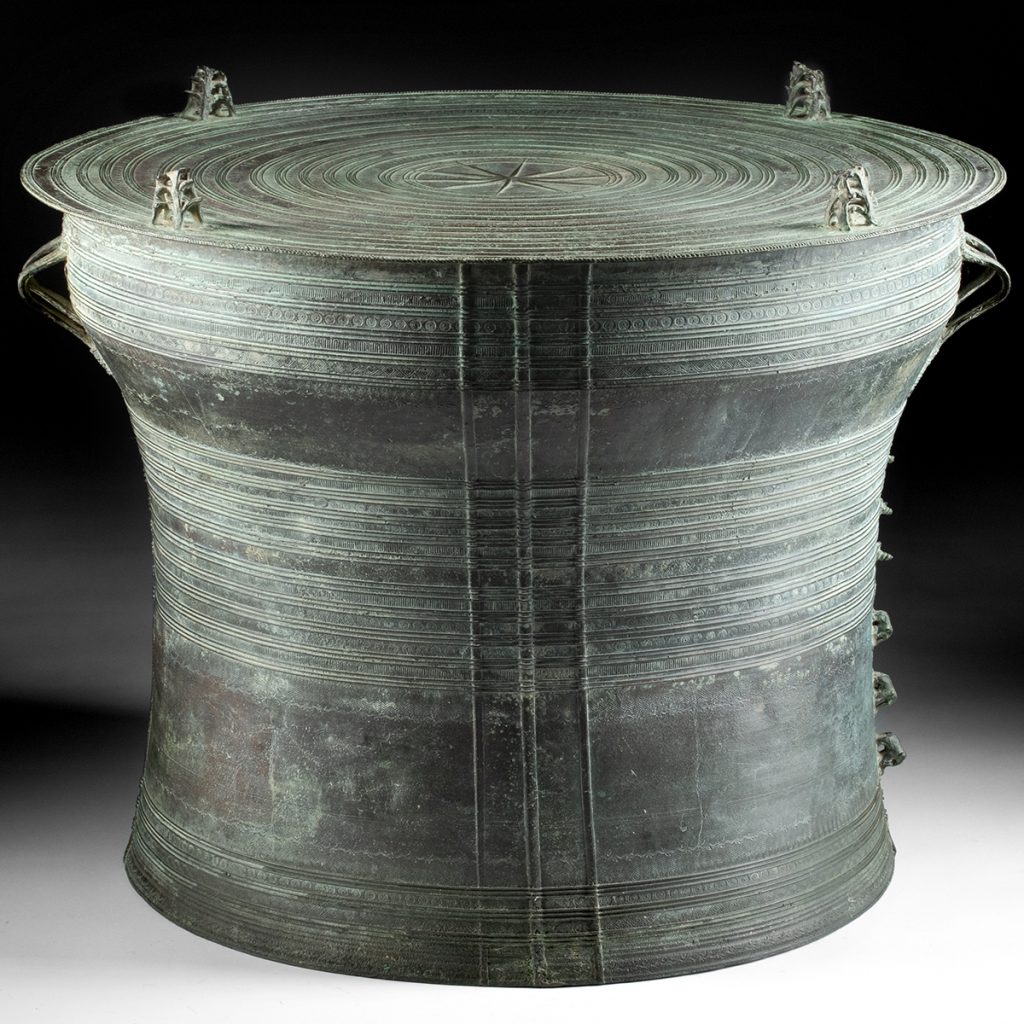Rain drums, with their resonant and percussive qualities, carry a history deeply intertwined with cultural symbolism and spiritual significance. Originating from Southeast Asia, these unique instruments have played integral roles in ceremonies, rituals, and artistic expressions, leaving behind a legacy that resonates with the cadence of rainfall.

Southeast Asian Origins: The history of rain drums is rooted in the cultural landscapes of Southeast Asia, particularly in regions like Vietnam and Indonesia. The earliest rain drums were crafted by indigenous communities from bronze, employing a distinctive design with intricate patterns and relief motifs. These drums were not merely musical instruments but held spiritual and ceremonial importance.
Cultural Significance: In Southeast Asian cultures, rain is often symbolic of fertility, prosperity, and renewal. Rain drums were believed to possess a connection with the spiritual realm, and their rhythmic sounds were thought to invoke the blessings of rain for bountiful harvests and well-being. These drums became central to rituals celebrating the cyclical nature of life, reflecting the dependence of communities on the vital forces of nature.
Ceremonial Use: Rain drums were featured prominently in ceremonial contexts, such as agricultural rituals and rites of passage. Their distinctive resonance was believed to carry messages to the divine, seeking harmony with the natural elements. The act of playing rain drums became a communal expression of gratitude and reverence for the life-giving gift of rain.
Artistic Craftsmanship: Crafting rain drums involved a meticulous process that showcased the artistic prowess of local artisans. The intricate patterns on the surface of the drums not only served decorative purposes but often held symbolic meanings, depicting elements from nature, mythology, or daily life. Each rain drum was a unique work of art, reflecting the cultural identity of the community that created it.
Symbolism in Relief Motifs: The relief motifs on rain drums often featured symbolic representations of animals, plants, and spiritual entities. These motifs conveyed narratives of creation, fertility, and the interconnectedness of humans with the natural world. The act of playing the drum was, in essence, a dialogue with these symbolic representations.
Spread to Other Regions: Over time, rain drums gained recognition beyond Southeast Asia and found their way into the collections of art enthusiasts and museums worldwide. The allure of their distinctive sound and cultural significance captured the fascination of a global audience.
Contemporary Revival: In modern times, there has been a revival of interest in rain drums both as cultural artifacts and musical instruments. Musicians, artists, and collectors appreciate the unique tones produced by rain drums, and their cultural significance continues to be explored and celebrated.
Cultural Preservation: Efforts are underway to preserve the cultural heritage associated with rain drums. Cultural institutions and communities work to safeguard the traditional craftsmanship, stories, and rituals linked to these instruments, ensuring that future generations can connect with the rich tapestry of Southeast Asian cultural history.
In summary, the history of rain drums is a melodic narrative that weaves together the spiritual, artistic, and communal aspects of Southeast Asian cultures. These drums, with their captivating resonance, echo the deep connection between humanity and the rhythmic cycles of nature.